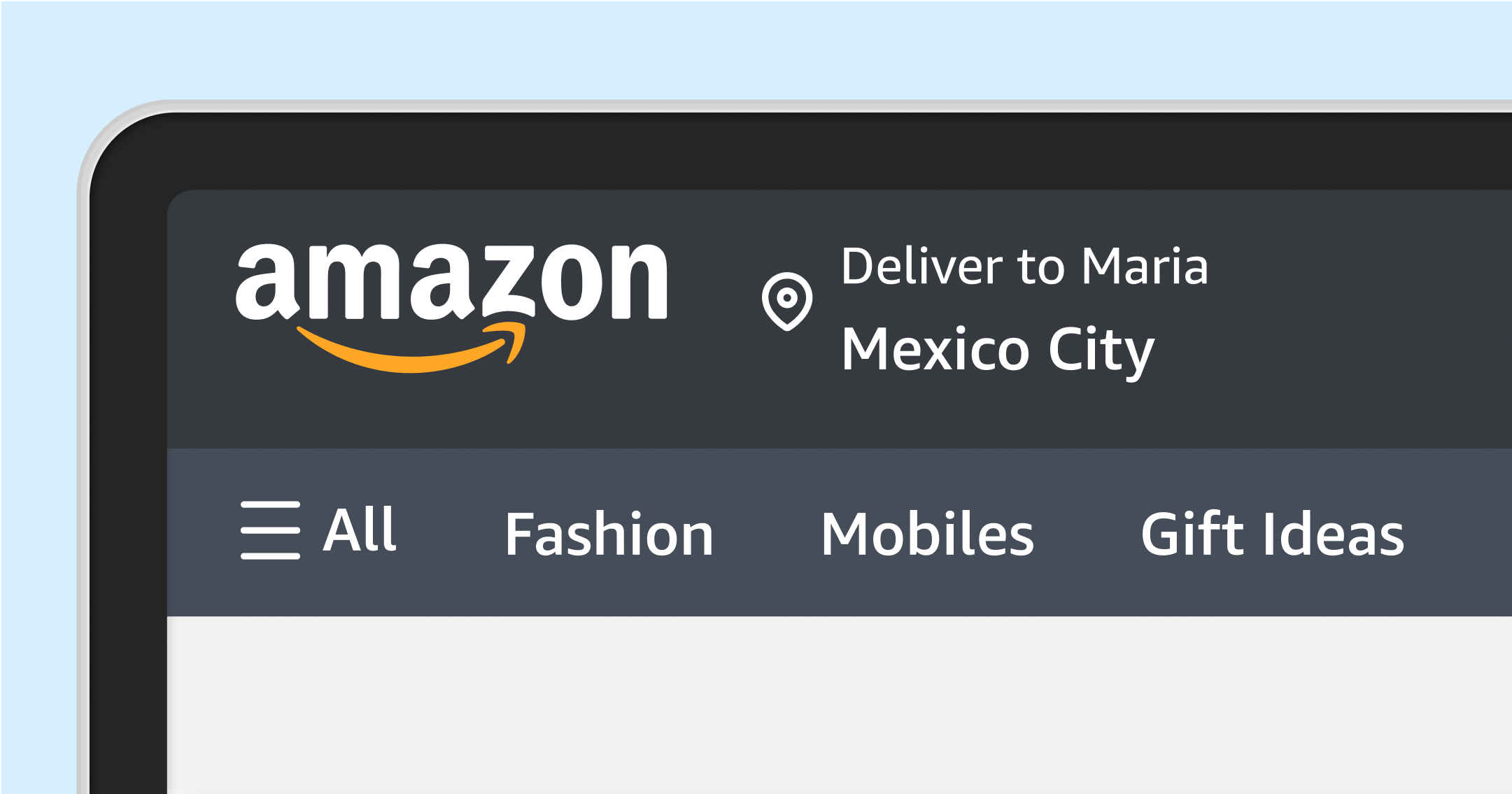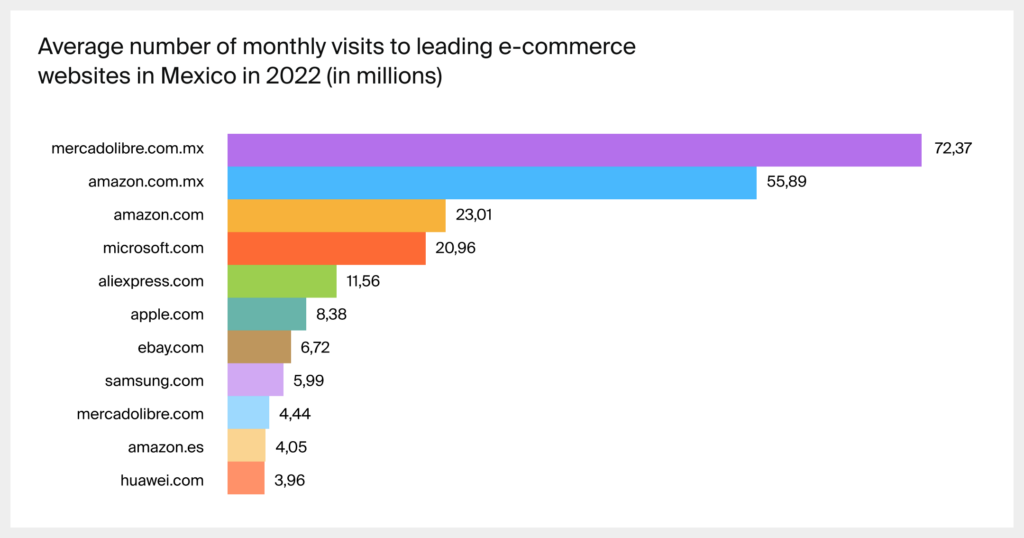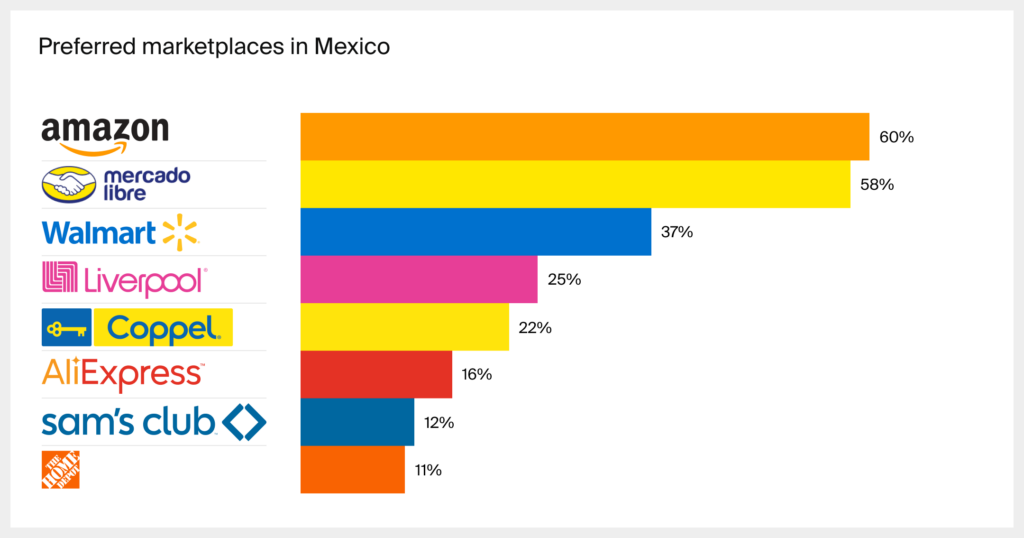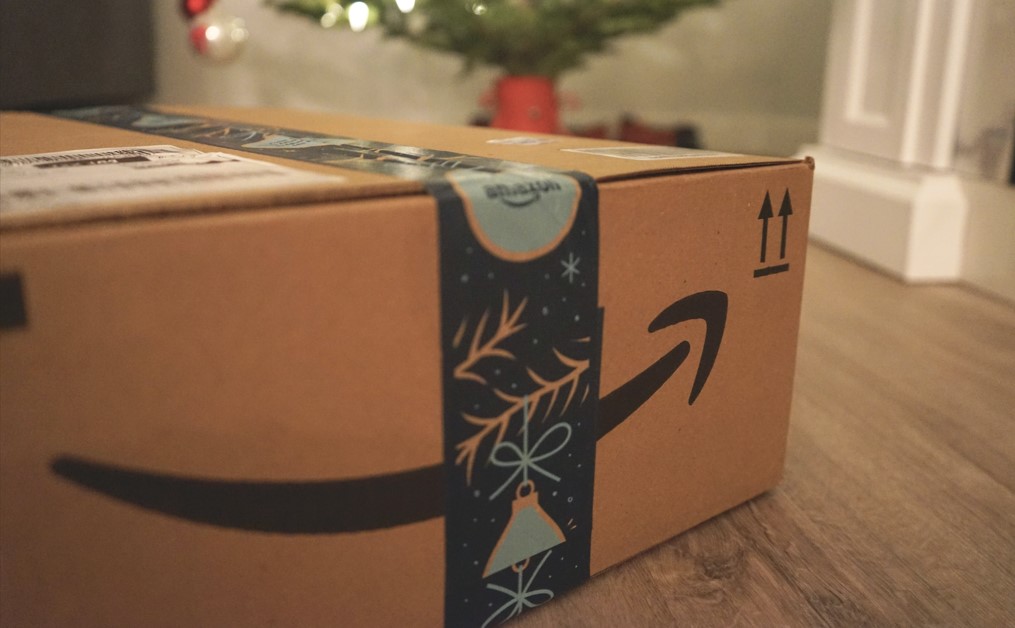
For brands considering expanding internationally, marketplaces in Mexico can be a great option. For one thing, Mexico’s total ecommerce revenue is expected to grow 33% this year. This outpaces the expected 22% growth rate of U.S. ecommerce revenue in 2023.
Although there is a general feeling that Mercado Libre is more relevant than Amazon, the truth is they are very similar when it comes to sales. Although Mercado Libre receives more traffic than Amazon, Amazon sold more in 2022. Just take a look at these stats:


These numbers show that if you want to sell in Mexican marketplaces, you should consider selling both on Amazon and Mercado Libre. While Mercado Libre has less red tape than Amazon, Amazon is considered safer in many ways because they ask more from sellers to secure the quality of their products. A clear example of this is that Mercado Libre does not ask for a brand registry in order to sell: they lean on reviews to secure product quality. On the other hand, Amazon asks for a brand registry and also acts as a middleman in case of a dispute.
According to Statista’s Global Consumer Survey, six out of 10 buyers have bought on Amazon in the last 12 months. Following Amazon came Mercado Libre. Analysts state that a big part of Mercado Libre’s success is Mercado Pago, which allows buyers to purchase without a card. This is a big thing in Mexico, where half the population between 18 and 70 years has no bank account. Still, Amazon stepped up the game by offering buyers cash payment options, like paying at grocery shops or even during pickup in Amazon warehouses.
Here are some other differences between Amazon and Mercado Libre:
- Brand safeguards — As there is no requirement for Brand Registries in Mercado Libre, multiple sellers can market the same product and generate revenue without registration. This does not happen on Amazon, but your brand needs to be registered to sell.
- Product Modification Limitations — Unlike Amazon, once your product is sold in Mercado Libre, you can’t alter its category or title. Making such changes requires creating a new listing from the beginning.
- Consumer Interaction — Amazon acts as a middle man and provides customer service to all shoppers. This reduces the need for Amazon Sellers to dedicate resources to their Customer Service department — a helpful system that Mercado Libre does not offer.
Easy step for foreign brands
A significant advantage of selling over Amazon is that it makes it easy for sellers to expand to Mexico. If you’re based in the United States, you can create offers in Amazon’s Mexico stores using Remote Fulfillment with FBA. When you enroll in the program, Fulfillment by Amazon will use your inventory in U.S. fulfillment centers to directly complete orders across the border to the customer through Amazon Services LLC. Start with stock you already use for FBA or enroll new products and send them to Amazon.
Utilizing a third-party entity is another viable option for marketing your products in the Mexican market. However, Amazon’s platform stands out for its cost-effective solutions. According to information provided by Amazon, FBA (Fulfillment by Amazon) leads to a reduction of 32% in shipping expenses per unit compared to shipping alternatives provided by American companies. Moreover, FBA’s two-day shipping alternative reflects a cost decrease of 72% per unit compared to the equivalent two-day choices offered elsewhere.
Another feature is that the Amazon Mexico platform closely resembles its counterpart in the U.S. It offers a range of integrated features that help support brand success. American brands can seamlessly migrate listings, benefiting from automated translation, currency conversion, and automatic price adjustments to accommodate supplementary international selling expenses.
How to get seen on Amazon
Once you figure out the logistics, it’s time to get buyers. Although Amazon represents an ample opportunity for retailers, it is also a big challenge when you want to get seen. Understanding how Amazon ranks products can become a real headache, but knowing the basics is necessary to succeed.
Amazon search engine optimization (SEO) involves enhancing product listings to achieve better rankings in product searches conducted on Amazon.com. By implementing a few uncomplicated measures, you can gain visibility of your product listings in search results, elevate sales, and make it easier for potential buyers to discover your brand.
Factors that help determine search results include product titles, product descriptions, optimized images, product features, and competitive pricing. You can use SEO to improve these elements and boost your ranking in Amazon search results. Start by making optimization an ongoing part of your ecommerce business strategy.
The tools that will make your life easier
You can follow Amazon recommendations, but getting your listings ready to rank will take a while. Here are a few tools that will take you a long way in a short time:
- The first, Keyword Research, helps discover relevant keywords that potential buyers use to find products like yours. It provides valuable insights on search volume, relevance, and competition, empowering sellers to make data-driven decisions about targeting keywords.
- The second, AI-powered Listing Optimization, allows sellers to effortlessly craft compelling product descriptions and ensure listings contain the right keywords to attract customers.
- The third, Keyword Tracker, monitors your product’s ranking on Amazon search results for specific keywords, enabling you to react quickly to your competitors’ changing circumstances and always stay one step ahead.


